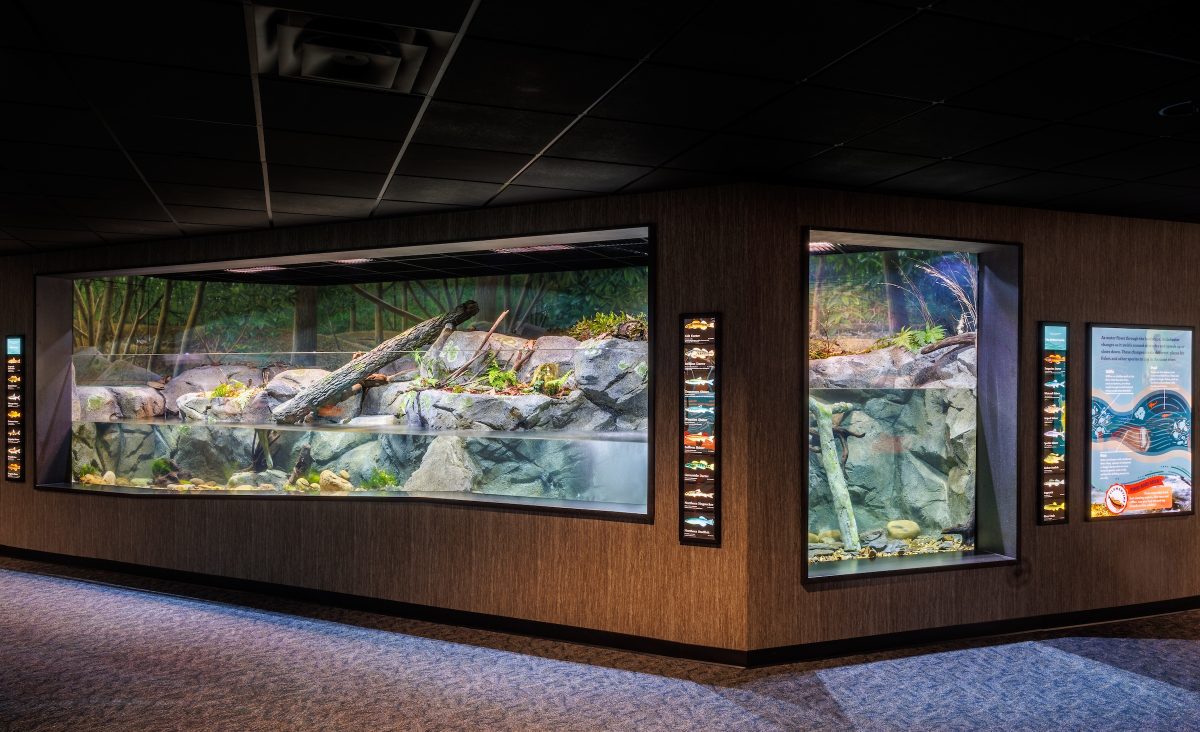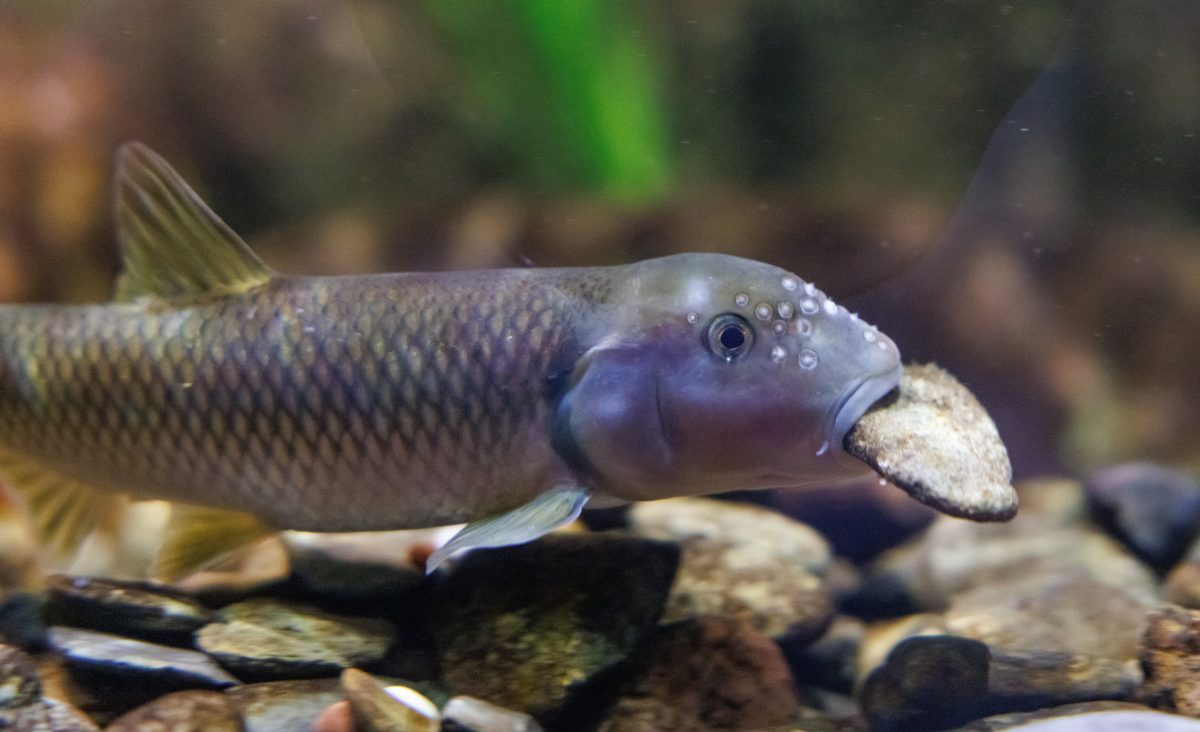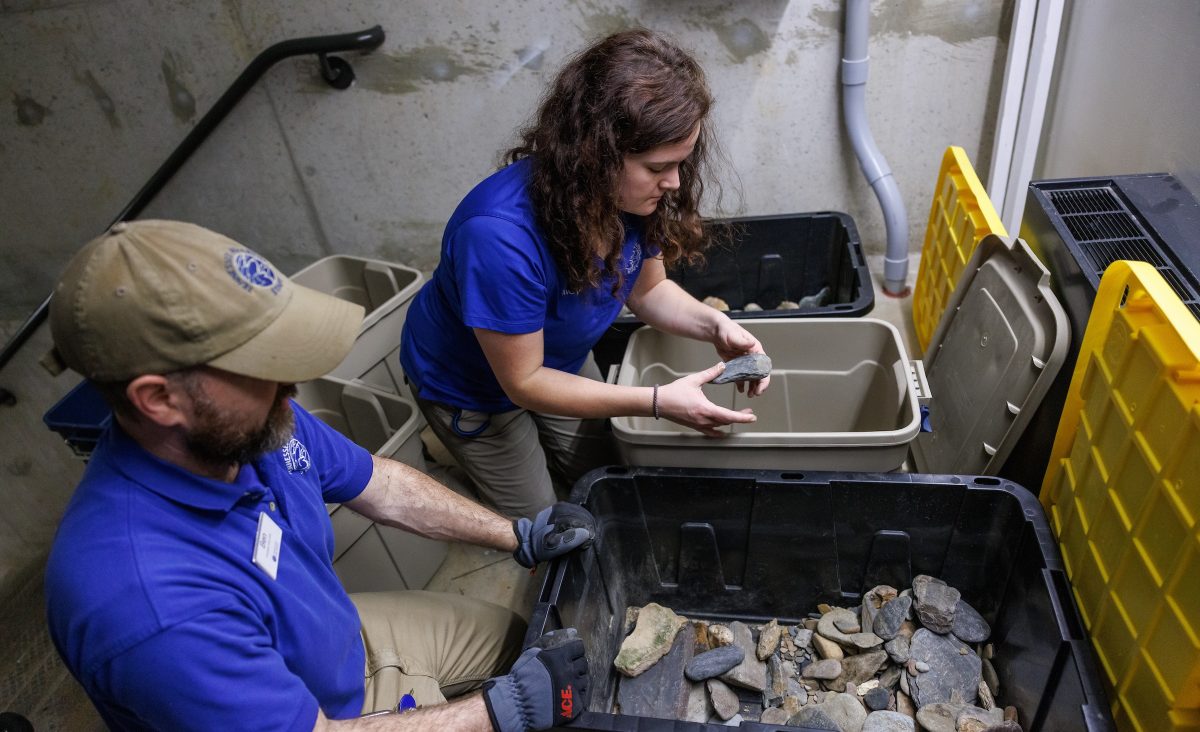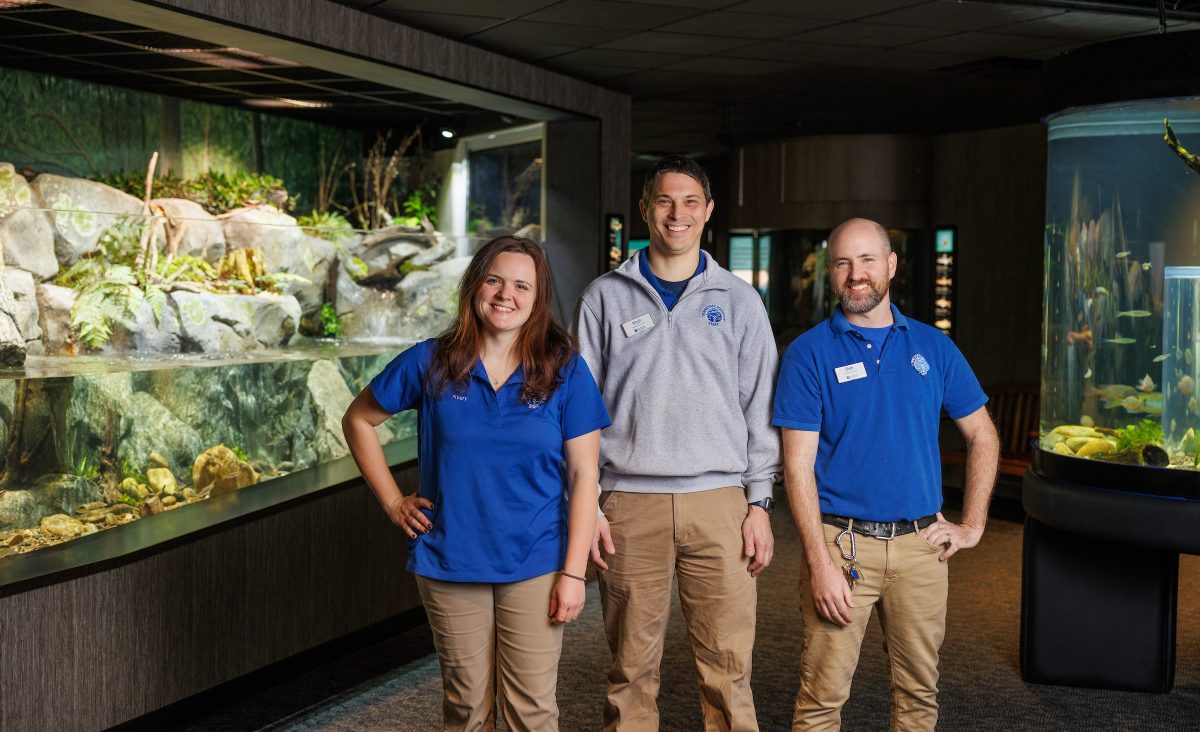Chattanooga, Tenn. (May 16, 2024) – When it comes to zoos and aquariums, it’s one thing to make an animal’s home look natural, but getting it to actually behave like a wild ecosystem? That’s a higher hurdle to clear.
“Sometimes, exhibits are designed to meet the needs of each species, and that’s it,” says Tennessee Aquarium Senior Aquarist Ben Stenger. “The fish are happy, and people come to see them, and that’s OK.”
When planning began in 2020 for the Aquarium’s Ridges to Rivers gallery, however, Stenger and other Aquarium veterans had loftier goals for how to exhibit Southern Appalachian aquatic life.
The centerpiece of the gallery, a 22-foot-long recreation of a bustling stream in the Upper Tennessee River drainage, couldn’t just look the part; it had to behave like an actual waterway. Ideally, guests looking at this habitat would feel the same awe at the colors and behaviors of its residents experienced by the lucky few who get to visit wild steams.

The Ridges to Rivers gallery's 22-foot-long large stream exhibit at the Tennessee Aquarium. Thanks to extensive refinement using an exact prototype, this habitat accurately recreates conditions of streams flowing in the Upper Tennessee River drainage.
“In 2006, I began taking snorkeling very seriously, going out every weekend and seeing what was out there,” says Senior Aquarist Ben Stenger. “I wanted people who weren’t able to do that to see what I was seeing. I wanted that so badly.”
Last week, the Aquarium witnessed a community spawning event that takes place each spring in actual stream communities but is extremely rare — if not unprecedented — in human care.
Beginning in late April, a male River Chub, a minnow measuring just a few inches long, began determinedly carrying rocks from all around the exhibit in his mouth. He deposited these stones, one by one, in a mound that steadily grew over the course of several days.
These rocky constructions serve as nests for River Chub eggs, but they don’t just benefit their makers. Many other stream-dwelling species, such as Rosyside Dace and Warpaint Shiners, spawn their own eggs in these sheltered, well-oxygenated havens.

A male River Chub carries a stone in its mouth to add to the nest he is building in the Tennessee Aquarium’s Ridges to Rivers gallery. River Chub nests can be massive, measuring several feet across, and attract other stream fish who want to use them to spawn their own eggs.
In a sense, River Chubs are like the civil engineers and event planners of Southern Appalachian streams. Their industrious homesteading sparks a community-level frenzy of activity and brilliant bursts of color from other spawning fish.
Within the Aquarium’s Mountain Stream exhibit, the male River Chub’s rocky nursery sparked the same reaction from other stream residents. While the chub continued his single-minded work, Tennessee Shiners, Tennessee Dace and Saffron Shiners eager to spawn took on brilliant red, orange and yellow breeding regalia and hovered over the nest in a tight ball.
“That was the loftiest goal we could hope for in that exhibit,” says Aquarist II Avery Millard, who oversees the care of the exhibits in Ridges to Rivers. “It was kind of surreal seeing their natural behaviors and interactions.”
This event wasn’t just a milestone moment in animal care and exhibition, it was the realization of years of careful planning, research and exhibit design.

Senior Aquarist Ben Stenger and Aquarist II Avery MIllard sort through rocks to add to the large stream exhibit at the Tennessee Aquarium. These rocks were collected from the same locations as the fish that live in the exhibit.
Two years before guests were able to walk through the gallery, Millard and Stenger spent months endlessly troubleshooting the design of the large stream exhibit using an exact replica constructed at an off-site warehouse by the Aquarium’s maintenance team. This one-to-one prototype made from plywood, gravel, pond liner, cinderblocks, and hoses was funded by a $140,000 grant through the Institute of Museum and Library Services’ Museums for America program.
For the River Chub, building a nest was instinctual, but this act was the culmination of aquarists’ painstaking campaign to make the exhibit behave like a natural stream. Through constant brainstorming and experimentation, they shaped the rockwork, adjusted pump flow rates, and oriented almost a dozen feeder jets — just so — to accurately recreate the pools, riffles, runs, and falls of a wild waterway.
“We are so grateful for the support we received from IMLS,” says Melanie King, the Aquarium’s vice president and chief development officer. “Those funds allowed our husbandry and exhibit teams to test and build a world-class habitat that mimics a natural stream and gives the animals in our care the best possible conditions to thrive in.
“The extensive research and design afforded by this grant paid off, as we now witness this incredible naturalistic behavior.”

Aquarist II Avery Millard, Curator of Fishes Matt Hamilton and Senior Aquarist Ben Stenger (from left) stand in the Ridges to Rivers gallery at the Tennessee Aquarium. Creating a gallery spotlighting the aquatic life living in Southern Appalachian streams and rivers was a career ambition for many Aquarium team members.
As exciting as it was to watch, the community-level event spurred by the nest-building chub held even greater meaning for the many Aquarium team members who have longed to make guests feel connected to the Southeast’s underwater rainforest of aquatic life.
“When all the aquarists working on the gallery were planning the exhibit, we were saying, ‘I think we can do this and make it work,’” says Curator of Fishes Matt Hamilton. “To see natural behaviors consistently in this exhibit is what we truly hoped would happen, so having it all come to fruition is awe-inspiring.”